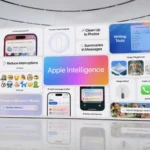

Lead the Change with Green Technology: A Path to a Sustainable Future
Introduction to Green Technology
Green technology, often referred to as environmental technology or clean technology, encompasses a broad range of techniques and materials that aim to mitigate the negative impacts of human activities on the environment. This field emphasizes the development and application of products and services that are both ecologically responsible and resource-efficient. In today’s world, marked by rapid technological advancements and pressing environmental challenges, adopting green technology has become not only a necessity but also a pivotal movement toward sustainability.
The significance of green technology lies in its potential to foster sustainable development.
It directly addresses critical global issues such as climate change, resource depletion, and pollution. By promoting the use of renewable energy sources such as solar, wind, and hydroelectric power, green technology reduces our dependence on fossil fuels, which are a major contributor to carbon emissions. Additionally, innovations like electric vehicles offer cleaner alternatives to traditional gasoline-powered transportation, significantly lowering greenhouse gas emissions.
Green technology’s relevance in contemporary society extends across multiple sectors. In the energy sector, advancements in solar panels and wind turbines have made renewable energy more accessible and cost-effective. In transportation, electric vehicles are gaining traction, thanks to improvements in battery technology and charging infrastructure. Moreover, sustainable innovation in building designs, waste management, and water purification systems contributes vastly to eco-friendly urban development.
As we navigate through the 21st century, the role of green technology cannot be overstated. It is a catalyst for transformative change, urging individuals, businesses, and governments to rethink their environmental footprint. By investing in and adopting green technologies, we pave the path toward a future where economic growth and environmental stewardship go hand in hand, ensuring that our natural resources are preserved for generations to come.
Renewable energy stands at the forefront of sustainable innovation, offering viable alternatives to the traditional reliance on fossil fuels. There are several prominent forms of renewable energy, each harnessing natural processes to generate electricity efficiently and with minimal environmental impact.
Solar Power
Solar power leverages photovoltaic (PV) cells to convert sunlight into electricity. These cells are made from semiconductor materials that generate an electric current when exposed to sunlight. With the advancement of technology, solar panels have become more efficient, cost-effective, and easier to install. Countries like Germany and China have led by example, demonstrating the capacity of solar power to provide a significant portion of a nation’s energy needs. The widespread adoption of solar energy systems has dramatically reduced carbon footprints and promoted energy independence.
Wind Energy
Wind energy utilizes large turbines to convert wind’s kinetic energy into electricity. Wind farms, often positioned in windy regions like offshore sites or high-altitude areas, contribute substantially to the energy mix. Denmark, for instance, generates over 40% of its electricity from wind power, showcasing its potential to replace fossil fuel-based power plants. The efficiency and scalability of wind energy make it a cornerstone of green technology in modern times.
Hydropower
Hydropower captures the energy from flowing water, typically through dams, to drive turbines that generate electricity. This method has been used for centuries and remains a significant source of renewable energy. With projects like the Three Gorges Dam in China, hydropower illustrates the immense capacity for energy generation while also providing flood control and water supply benefits. Its low operating costs and reliability further bolster its role in the renewable energy landscape.
Geothermal Energy
Geothermal energy taps into the Earth’s internal heat to generate electricity or provide direct heating. This is achieved through wells that draw hot water or steam from below the Earth’s surface. Iceland exemplifies successful implementation, with geothermal power contributing approximately 25% of its electricity and 90% of its heating needs. Geothermal energy offers a steady, year-round source of power that is both sustainable and highly efficient.
Across the globe, numerous renewable energy projects have underscored the feasibility and benefits of moving away from fossil fuels. These projects not only contribute to reducing greenhouse gas emissions but also promote energy security and sustainability. As technological advancements continue to progress, the potential for renewable energy to power our world sustainably is more promising than ever.
Electric Vehicles: Driving Towards a Greener Tomorrow
The advancements in electric vehicle (EV) technology have significantly transformed the automotive industry, steering it towards a more sustainable future. Electric vehicles, unlike traditional gasoline-powered cars, offer a multitude of benefits encompassing environmental, economic, and technological aspects.
One of the foremost environmental advantages of EVs is their potential to considerably reduce greenhouse gas emissions. Traditional gasoline engines combust fossil fuels, releasing a significant amount of carbon dioxide and other pollutants into the atmosphere. In contrast, electric vehicles produce zero tailpipe emissions, thus playing a crucial role in mitigating climate change and improving air quality. As the grid transitions to renewable energy sources such as wind and solar power, the environmental footprint of EVs is expected to diminish even further, rendering them an indispensable component of sustainable innovation.
Economically, electric vehicles present a compelling case due to their lower operating costs. Charging an EV typically costs less than refueling a gasoline-powered car. Additionally, EVs have fewer moving parts, which translates to lower maintenance costs and less frequent repairs. These economic incentives, along with various government subsidies and incentives aimed at promoting EV adoption, make electric vehicles an attractive option for a broad range of consumers.
The market for electric vehicles
is rapidly expanding, with a diverse array of models and types now available to suit different needs and preferences. From compact electric cars designed for urban commuting to robust electric SUVs and trucks capable of long-distance travel, consumers have more choices than ever. Emerging trends in the EV sector include the development of more efficient battery technologies, increased range capabilities, and the integration of advanced autonomous driving features. Furthermore, innovations like wireless charging and vehicle-to-grid technology, which allows EVs to supply power back to the grid, are poised to drive future growth in the EV market.
Electric vehicles epitomize the intersection of environmental technology and sustainable innovation, representing a pivotal shift in how we conceptualize transportation. As advancements continue, electric vehicles will undoubtedly play a vital role in driving us towards a greener tomorrow.
Reducing Your Carbon Footprint
Reducing your carbon footprint is imperative in our collective effort to promote sustainable innovation and mitigate environmental impact. Both individuals and businesses can take a series of actionable steps to contribute to this cause. One of the most effective strategies is to enhance energy efficiency in daily operations. Simple changes such as switching to LED lighting, using programmable thermostats, and ensuring proper insulation can significantly cut down energy consumption and, consequently, reduce greenhouse gas emissions.
Another vital component is waste reduction. Implementing recycling programs and opting for reusable products can drastically reduce the volume of waste that ends up in landfills. Encouraging a culture of “reduce, reuse, and recycle” within households and workplaces can have a profound impact. For example, businesses can minimize paper use by adopting digital documentation and communication tools, while individuals can opt for reusable shopping bags, water bottles, and containers.
Adopting sustainable practices also plays a crucial role. This includes choosing renewable energy sources such as solar or wind for electricity needs and integrating electric vehicles (EVs) into transportation routines. The use of environmental technology, such as energy-efficient appliances and sustainable building materials, further augments these efforts. Initiatives like carpooling or telecommuting can also reduce the carbon footprint associated with travel.
Small changes often culminate in substantial effects over time. For instance, reducing meat consumption, particularly red meat, can lower methane emissions from livestock farming. Additionally, supporting local businesses and buying seasonal produce reduces the carbon footprint associated with long-distance transportation.
To aid these efforts, various tools and apps are available to track and manage carbon footprints. For instance, platforms like Carbon Footprint Calculator and My Earth – Track Your Carbon Impact provide valuable insights into one’s environmental impact and offer practical suggestions for improvement. By integrating these strategies and utilizing technological aids, individuals and businesses can make a meaningful contribution to a more sustainable future.
Cost Savings with Green Technology

Investing in green technology often results in significant financial benefits over the long term. One of the primary ways this is achieved is through the adoption of renewable energy sources, such as solar and wind power, which can substantially lower energy bills. Homes and businesses equipped with solar panels can generate their electricity, reducing reliance on traditional power grids and mitigating monthly utility costs. Additionally, energy-efficient appliances, including LED lighting, smart thermostats, and energy-saving HVAC systems, contribute to fewer expenses by using less electricity and optimizing energy consumption.
Apart from the obvious reductions in utility costs, many governments worldwide offer various incentives to encourage the use of green technology. These incentives range from tax rebates to subsidies and grants, making the initial investment more affordable. For instance, in the United States, the federal government provides the Investment Tax Credit (ITC), which allows individuals and businesses to deduct a significant portion of the cost of installing solar energy systems from their federal taxes. Similarly, in Europe, the European Union offers subsidies under the Horizon 2020 program to promote renewable energy projects and sustainable innovation.
Government incentives can significantly alleviate the financial burden of adopting green technology. For example, the Clean Vehicle Rebate Project in California offers substantial rebates for purchasing electric vehicles, thus reducing the upfront cost for consumers. Additionally, businesses investing in environmental technology may qualify for tax deductions such as the Modified Accelerated Cost-Recovery System (MACRS), allowing them to depreciate the value of their green technology investments over a shorter period.
The financial benefits of green technology extend beyond immediate cost savings. Over time, the cumulative savings on energy bills, coupled with government incentives, lead to a faster return on investment. Therefore, adopting green technology not only contributes to environmental sustainability but also makes economic sense, providing long-term financial stability for individuals and businesses alike.
Contributing to Global Environmental Efforts
International initiatives like the Paris Agreement highlight the critical need for collaborative effort in combating climate change and promoting sustainable development. The Paris Agreement, adopted in 2015, aims to limit global warming to well below 2 degrees Celsius, preferably to 1.5 degrees Celsius, compared to pre-industrial levels. This ambitious goal underscores the collective responsibility nations share in reducing greenhouse gas emissions and fostering sustainable practices.
Adopting green technology is a pivotal strategy in aligning with these international frameworks. Green technology encompasses a wide array of advancements, including renewable energy sources like solar, wind, and hydropower, alongside innovations in energy efficiency and environmental technology. Transitioning to renewable energy not only curtails carbon footprints but also alleviates dependence on non-renewable resources, thereby supporting global environmental objectives.
Individual and community actions can significantly amplify the impact of these broader initiatives. For instance, the increased adoption of electric vehicles (EVs) can drastically reduce urban air pollution and greenhouse gas emissions. By embracing sustainable innovation at a grassroots level, communities contribute to the overarching goals stipulated by global agreements like the Paris Agreement.
Furthermore, environmental technology, which includes innovations such as smart grids and energy-efficient appliances, enables more efficient resource management, leading to a reduction in overall environmental impact. Participating in these advancements not only supports global sustainability but also propels local communities towards more eco-friendly living standards.
Ultimately, the alignment of green technology with international environmental efforts showcases the immense potential for collective action. By integrating renewable energy and sustainable innovations into daily practices, individuals and communities can make substantial contributions towards achieving a more sustainable future, harmonizing both local actions and global aspirations in the fight against climate change.
Innovating Responsibly
Responsible innovation forms the bedrock of advancing green technology and ensuring that developments in environmental technology contribute positively to society and the planet. At its core, responsible innovation integrates ethical considerations, prioritizes sustainability, and upholds social responsibility in all phases of technological advancements. It acknowledges that the path to sustainable innovation isn’t solely about deploying new technologies but doing so in a manner that is ethically sound and socially equitable.
Ethical considerations within green technology innovation necessitate a thorough assessment of potential impacts on communities and ecosystems. This involves continuous stakeholder engagement, transparency in operations, and fostering inclusive practices that empower underrepresented groups. For instance, sustainable energy solutions should consider both the environmental benefits and the socio-economic well-being of local populations.
Critically, sustainability must be woven into the very fabric of innovation strategies. Companies and startups leading in this arena are exemplary models of how aligning business goals with environmental stewardship can drive progress. Tesla, for example, is transforming the automotive industry with its electric vehicles and commitment to reducing carbon footprints. Similarly, Ørsted has shifted from being a traditional energy company to one of the world’s most sustainable energy firms, focusing on renewable energy sources such as wind and solar power.
Innovation underpinned by social responsibility demands that organizations extend their vision beyond immediate technological gains to include long-term societal impacts. Patagonia exemplifies this approach by not only utilizing sustainable materials in its products but also advocating for environmental conservation and ethical labor practices. Another noteworthy example is Beyond Meat, which leverages plant-based proteins to offer sustainable alternatives to traditional meat, thus addressing ecological concerns and catering to growing health consciousness.
Ultimately, the principle of responsible innovation in green technology is not just about forward-thinking but also about right-thinking. It compels innovators to envisage a future where technological advancements are harmoniously aligned with ethical responsibility, environmental sustainability, and social good, ensuring a truly sustainable future for all.
Future Trends in Green Technology
Green technology continues to evolve at a rapid pace, driven by the urgency to address environmental challenges and improve sustainability. Anticipated future trends in this field promise to revolutionize various sectors, making them more efficient and eco-friendly. Among the most promising developments are smart grids, which aim to modernize electricity distribution to enhance efficiency and reduce waste. Smart grids employ sensors, meters, and data analytics to manage energy flow dynamically, directly impacting energy consumption patterns and reducing greenhouse gas emissions.
Another notable trend is carbon capture and storage (CCS) technology, designed to mitigate the impact of fossil fuel usage by capturing carbon dioxide emissions before they enter the atmosphere. This innovation is crucial for industries that are traditionally heavy polluters, offering a pathway to decarbonize operations and contribute to global climate goals. Advanced battery storage systems also show significant promise, with ongoing research focused on increasing energy storage capacity and reducing costs. Improved battery storage is essential for scaling up the usage of renewable energy sources like solar and wind, which are intermittent.
The integration of Artificial Intelligence (AI) and the Internet of Things (IoT) into green technology represents another transformative trend. These advancements enable the creation of intelligent systems that optimize resource use and monitor environmental impact in real time. For example, AI-driven energy management systems can analyze usage patterns and suggest adjustments to enhance efficiency, while IoT devices can track environmental parameters and automate responses to reduce energy waste.
Looking ahead, the landscape of green technology is set to be increasingly influenced by these emerging innovations. They hold the potential to revolutionize sectors such as transportation, with electric vehicles becoming more mainstream, and urban planning, by developing sustainable smart cities. As these technologies mature, they will play a pivotal role in leading the transition towards a more sustainable future, offering practical solutions to pressing environmental issues.
Here are some sources that you can reference for the topic “Lead the Change with Green Technology: A Path to a Sustainable Future”:
- United Nations Environment Programme (UNEP)
- Green Technology and Sustainable Development
The UNEP provides extensive insights into how green technologies contribute to sustainable development and the global push towards a greener future.
- International Renewable Energy Agency (IRENA)
- Renewable Energy and Jobs – Annual Review 2022
IRENA offers data and analysis on the renewable energy sector and its role in leading sustainable change.
- World Economic Forum
- The Future of Green Energy
This article from the World Economic Forum explores how investment in green energy is shaping the future and driving sustainability.
- The Guardian
- How Green Technology is Driving the Sustainable Future
The Guardian discusses the impact of green technology on creating a more sustainable future and the key technologies involved.
- National Renewable Energy Laboratory (NREL)
- Green Technology Innovations
NREL covers various innovations in green technology that are paving the way for a sustainable future.
These sources will provide you with authoritative information and perspectives on green technology and its role in fostering a sustainable future.
by TechTaker
Related Posts
youtube to mp3
Your writing has a way of making even the most complex topics accessible and engaging. I’m constantly impressed by your ability to distill complicated concepts into easy-to-understand language.










3 comments